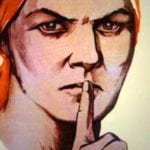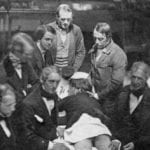 Technology
Technology  Technology
Technology  Humans
Humans 10 Everyday Human Behaviors That Are Actually Survival Instincts
 Animals
Animals 10 Animals That Humiliated and Harmed Historical Leaders
 History
History 10 Most Influential Protests in Modern History
 Creepy
Creepy 10 More Representations of Death from Myth, Legend, and Folktale
 Technology
Technology 10 Scientific Breakthroughs of 2025 That’ll Change Everything
 Our World
Our World 10 Ways Icelandic Culture Makes Other Countries Look Boring
 Misconceptions
Misconceptions 10 Common Misconceptions About the Victorian Era
 Mysteries
Mysteries 10 Strange Unexplained Mysteries of 2025
 Miscellaneous
Miscellaneous 10 of History’s Most Bell-Ringing Finishing Moves
 Technology
Technology Top 10 Everyday Tech Buzzwords That Hide a Darker Past
 Humans
Humans 10 Everyday Human Behaviors That Are Actually Survival Instincts
 Animals
Animals 10 Animals That Humiliated and Harmed Historical Leaders
Who's Behind Listverse?

Jamie Frater
Head Editor
Jamie founded Listverse due to an insatiable desire to share fascinating, obscure, and bizarre facts. He has been a guest speaker on numerous national radio and television stations and is a five time published author.
More About Us History
History 10 Most Influential Protests in Modern History
 Creepy
Creepy 10 More Representations of Death from Myth, Legend, and Folktale
 Technology
Technology 10 Scientific Breakthroughs of 2025 That’ll Change Everything
 Our World
Our World 10 Ways Icelandic Culture Makes Other Countries Look Boring
 Misconceptions
Misconceptions 10 Common Misconceptions About the Victorian Era
 Mysteries
Mysteries 10 Strange Unexplained Mysteries of 2025
 Miscellaneous
Miscellaneous 10 of History’s Most Bell-Ringing Finishing Moves
Top 10 Shocking Facts About Famous Writers
Famous authors are a constant source of fascination and intrigue. They open their minds to the public by creating characters and worlds that we take into our hearts, which makes us feel as though we know them. Meanwhile, the authors themselves remain distant and closed figures.
When we try to investigate what these authors are actually like, we find out the shocking truth of literary production: It is often the most creative minds that think the wildest thoughts, which leads them to do and believe the craziest things.
10 William S. Burroughs Shot His Wife
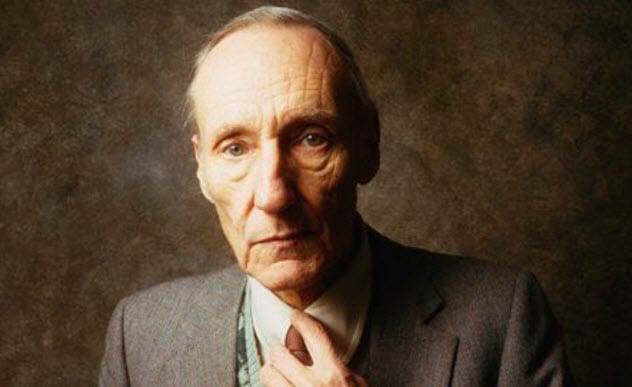
For his time, William S. Burroughs was as controversial as they come. He was a beat writer tapping into postmodernist themes and modes of writing. Naked Lunch, the novel for which he is famous, has been on and off the lists of banned books since the novel was published in 1959.
A heavy drug user, Burroughs held strong and often highly conservative opinions regarding reproduction and women’s rights. He was openly and actively homosexual despite having a wife and a son. Burroughs’s mental health was also frequently questioned. It was later revealed that he had suffered sexual abuse as a child and had once cut off the end of his finger in reaction to his first experiences with a steady boyfriend.
The most controversial fact regarding Burroughs, however, is that he shot his wife in 1951. There are no records to show that Burroughs had previously been violent toward his wife, Joan Vollmer. Yet on September 6, 1951, Burroughs, Vollmer, and some friends decided to play an alcohol-fueled game of William Tell.
At Burroughs’s instruction, Vollmer stood 3 meters (9 ft) away from him with a drinking glass on her head. Meaning to shoot the glass, Burroughs shot Vollmer in the head at her hairline instead. She died at 28 years old.
Although Burroughs claimed to be distraught (with he and his friends claiming that the gun went off accidentally), Burroughs subsequently described the act as fueling his success as a writer. He dismissed the killing as being performed by an external possessive force that wanted to control him.
Some have interpreted this as an admission of guilt. Burroughs was convicted of manslaughter[1] in absentia by a Mexican court after he skipped bail. He received a two-year suspended sentence.
9 Edgar Allan Poe Married His 13-Year-Old Cousin
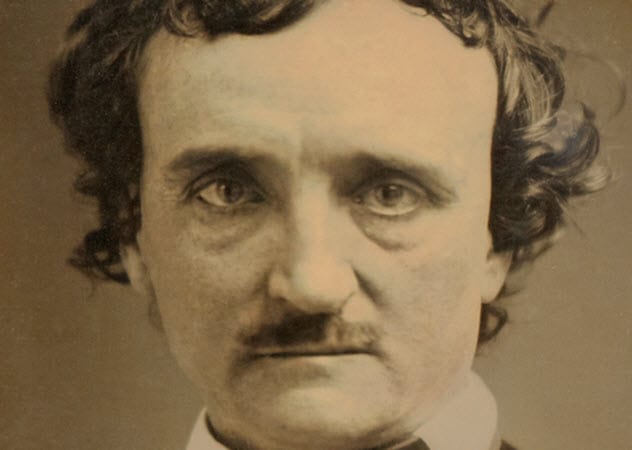
Edgar Allan Poe is now heralded as one of the best gothic writers of all time. During his life, however, he was a highly unfortunate character. His biological father abandoned the family when Poe was one, his biological mother died when he was two, and he was later disowned by his foster parents.
His writing was highly criticized, he was an alcoholic, and he found it difficult to publish his work due to the enemies he made in the industry. Yet Poe was able to find romantic happiness when he applied for a license to marry the love of his life,[2] Virginia Eliza Clemm, on September 22, 1835. He was 26, and she was 13.
Poe and Clemm were happily married for 11 years until she died suddenly on January 30, 1847, at age 24. Clemm had been suffering from tuberculosis for five years, which made her bleed in her lungs and out of her mouth.
Critics of Poe’s work now read the abundance of dead and undead women in his writing, in poems such as “Annabel Lee” (1849), as signs of his continued despair at the loss of his wife. The presence of blood and bleeding bodies is also a key repeating motif in Poe’s writing after Clemm’s illness, particularly in “The Masque of the Red Death” (1842).
Clemm’s body was originally buried in a local cemetery near the cottage which she and Poe had shared. But her body was later exhumed and reburied, along with Poe himself, at Westminster Church in Baltimore. There, a monument to them and Clemm’s mother (Poe’s aunt) remains today.
8 Charles Dickens Practiced Hypnosis
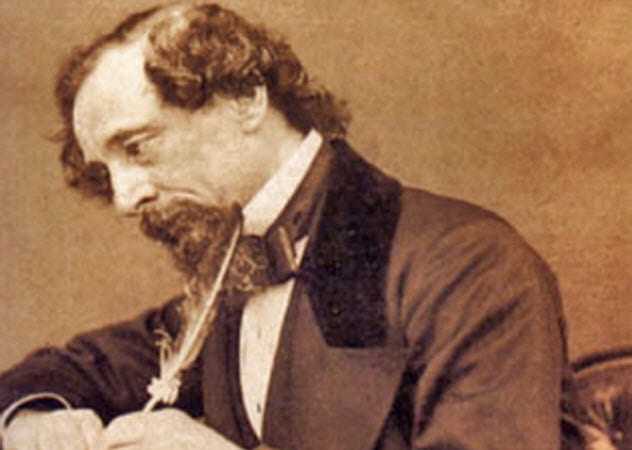
Charles Dickens is one of the most famous and successful Victorian writers. None of his novels or short stories has ever been out of print. Much of his writing involves examinations of the Victorian class system, the struggles of the poor, and the growing industrialization of British cities during his lifetime.
Yet Dickens was also highly interested in the supernatural. This is also evident in his work, such as the ghosts of A Christmas Carol (1843) and his numerous short stories involving paranormal beings.
Outside of writing, Dickens was a member of the Ghost Club, a society born at Cambridge University before moving to London to investigate potential cases of haunting and supernatural events. Dickens was also highly interested and claimed to be highly learned in the art of hypnosis.
He was a regular audience member at shows put on by John Elliotson, a famed hypnotist and disgraced doctor in Victorian London. Elliotson claimed that ailments such as cancer could be cured through hypnosis (commonly called mesmerism at the time). Inspired by what he saw, Dickens started studying and performing hypnosis[3] on friends and family.
He apparently eradicated the anxiety and facial tics of Augusta de la Rue in 1844. Dickens is then said to have cured the concussion symptoms of John Leech, illustrator of A Christmas Carol, in 1849. Dickens also frequently hypnotized his hypochondriac wife, Catherine, for a variety of conditions from which she believed she was suffering.
Dickens and Elliotson were not entirely wrong in their use of hypnosis as a medical aid. Studies have shown that it can help some surgical patients, but anesthesia remains the most popular choice among patients and doctors alike.
7 Elizabeth Barrett Browning Was A Drug Addict
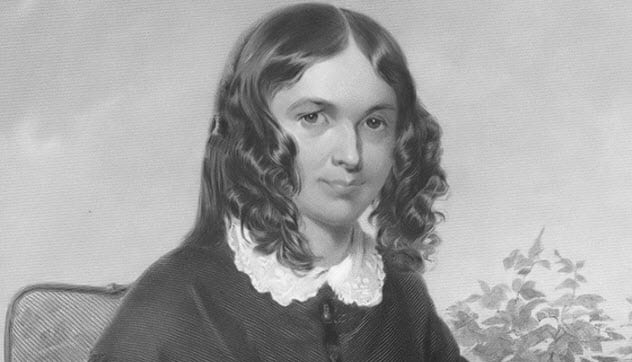
Elizabeth Barrett Browning was a popular poet and political writer in Victorian England. She faced a number of struggles throughout her life, including a controlling father who forbade her to get married, a lung condition, and a spinal injury that she received at age 15 when putting a saddle on a horse.
As a result of her fragile physical condition, Browning spent the majority of her early adult life confined to her bed in her father’s house. It was during this time that she was able to complete an extensive amount of reading, research, and self-teaching, including learning Hebrew through studying the Bible.
Her confinement also gave her time to write, and Browning went on to produce some of the most revered romantic poetry in British history. In fact, much of her poetry is considered as high in quality as that of William Shakespeare and Emily Dickinson.
Browning’s injuries also meant that she had access to a steady supply of opium (from which morphine is derived), which was used to treat a large variety of conditions in Victorian medicine. Browning is on record as calling opium her “elixir.” She said that it made her feel more relaxed and aided her ability to write. She also felt that she could not live without it.[4]
While receiving opium treatments daily for a number of years, Browning became a recluse. She exhibited a hyperfocus on her work and political interests without much care for anything else, including her inability to get out of bed. Browning’s husband, Robert, repeatedly chastised her for her drug use and begged her to stop using.
Finally, she was able to do so when she and Robert moved to Italy, away from her father and her family home. Given her father’s controlling nature and Elizabeth’s ability to recover from her physical ailments once away from his influence, it is now rumored that Browning acquired an opium addiction in response to depression that she felt while stuck at home.
6 Ernest Hemingway Was An Expert Bullfighter
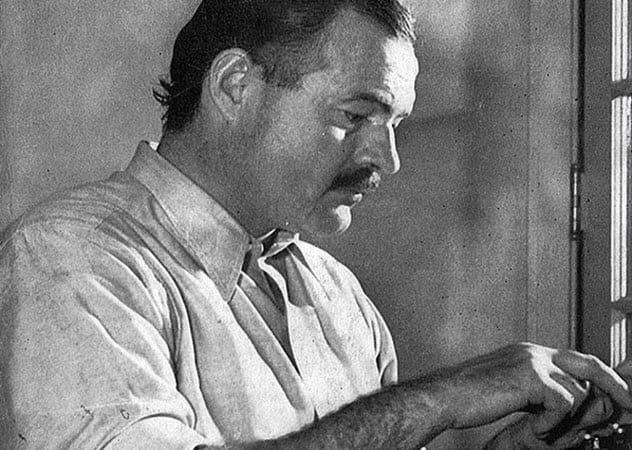
Ernest Hemingway became revered as one of the greatest American writers of the 20th century by writing about the things that most interested him: war, fishing, boxing, drinking, and bullfighting. These all reflect some aspect of Hemingway’s life.
He is famous for being a heavy drinker. He also served as an ambulance driver in Italy during World War I, boxed at the amateur level for prize money, and once caught a 530-kilogram (1,175 lb) marlin on a sailing trip on the Pilar in 1935.
Most people believe that his references to bullfighting stem from a passive interest, unlike his other themes which derive from personal experience. This was true until the 1920s, when Hemingway and his wife Hadley went on vacation to Pamplona, Spain. There, they watched bullfighting in the hope that it would have a masculinizing influence on their unborn son.
Hemingway was mesmerized and spent increasing amounts of time in Pamplona socializing with bullfighters and eventually taking part in amateur competitions himself. Bullfighting appeared in a number of his fictional works, such as The Sun Also Rises (1926).
But Hemingway also used his experiences as research to compile Death in the Afternoon (1932), a text that is now considered the bible of competitive bullfighting.[5] Among other artifacts retrieved from Hemingway’s home after his suicide in 1961 were two tickets to another bullfight in Pamplona.
5 Vernon Sullivan Was A White French Man
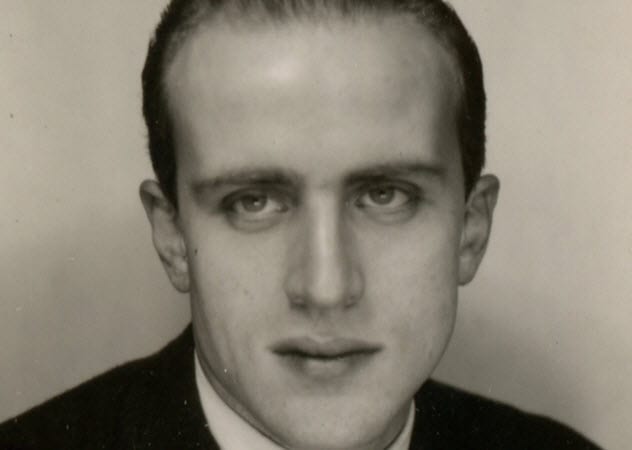
Vernon Sullivan is famous for writing one of the “quickest” banned books in history, both in the sense of how long it took to write and how instantly it caused offense. The novel, I Spit on Your Graves,[6] was published in 1946 to great outrage at its portrayal of teenage sex, rape, violence, and the demonization of both African Americans and US popular culture.
The story follows Lee Anderson, a black man who passes for white, as he grooms, rapes, and murders two young white girls as revenge for his innocent brother being hanged for the same crime. In the novel, the revealed race of Anderson is itself monstrous. A preface to the text states that the novel was written by Vernon Sullivan, an African American, who was afraid of the racial prejudice in America.
In reality, Vernon Sullivan was the pseudonym of Boris Vian, a white French man who had never been to America in his life. Vian wrote the novel in response to a bet, stating that he could write a scandalous best seller in less than 15 days. He was right. The novel took two weeks to complete and was a roaring success, making best-seller lists because it was so outrageous. This only multiplied when Vian’s true identity was revealed and the apparent authenticity of the novel was revealed to be a sham.
Just as characters claimed to have always seen something different in Anderson after his true race was revealed, readers responded to Vian’s revelation by pointing out mistakes in the novel that indicated it could not have been written by an American. Although these mistakes are valid, such as a car journey from Mexico to Canada that only takes a few hours, they do not erase the fact that Vian was believed on first publication.
4 Enid Blyton Hated Children
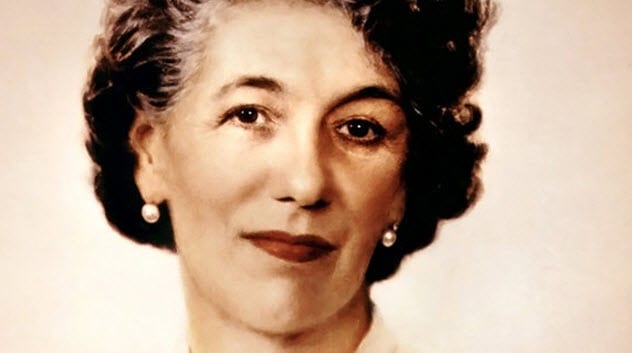
Enid Blyton was a highly commercial and much-loved children’s author of the 20th century. She published around 7,500 books in her lifetime, many of which remain classics to this day. As her writing mainly appeared between the 1930s and 1950s in England, many elements of her work that would now be considered racist and sexist are generally forgiven or overlooked as being products of her time.
Even so, contemporary publishers now rewrite her stories to erase these parts for modern-day children. This has met with mixed reviews, primarily because Blyton is held in such nostalgic esteem and championed as one of the greatest writers for children in British literary history. This is notwithstanding Blyton’s distaste for real-life children[7] and her cruelty toward her own kids, which often goes ignored by Blyton fans.
Neighbors who lived near Blyton’s Beaconsfield cottage reported that she would scream at the local children for playing too noisily. They also said that the divorced Blyton refused to allow her children to see their father after he remarried and that she was far nastier to one daughter than the other.
In her autobiography, younger daughter Imogen, who received the worst treatment, called her mother “arrogant, insecure, and without a trace of maternal instinct.” Imogen also wrote, “[Enid Blyton’s] approach to life was childlike, and she could be spiteful, like a teenager.”
Imogen recounted the story of how she and her sister were forced to stay in a room in their home with the door open enough so that they could watch their mother hold a tea party for some of her child fans. The daughters themselves were not allowed to join in. Remarkably, those who know of Blyton’s true personality still like her books, which demonstrates how successful these books were and continue to be in the present day.
3 Lewis Carroll May Have Tried To Marry The Real Alice
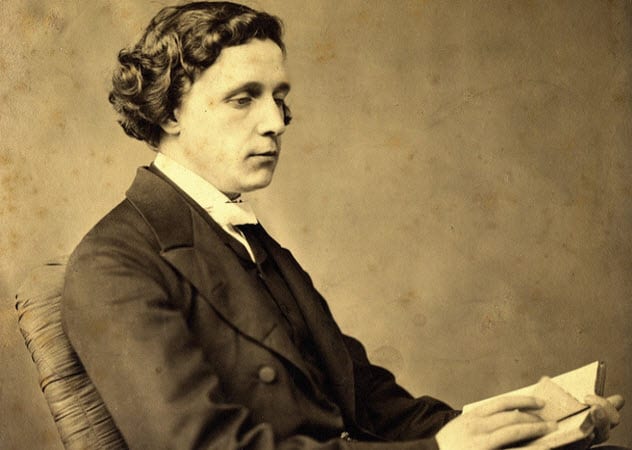
Lewis Carroll, whose real name was Charles Lutwidge Dodgson, was a prolific poet and story writer. He is most known for his creation of Alice’s Adventures in Wonderland (1865) and Through the Looking-Glass, and What Alice Found There (1871), which detail the journey of a little girl in a magical land where nonsense reigns supreme.
Long considered a classic of Victorian and children’s literature, Carroll’s work is difficult to separate from his private persona, which some have analyzed for potentially inappropriate feelings toward children.[8] Though no physical abuse was ever reported, Carroll was questioned by friends about a large number of photographs of naked young girls in his private collection.
He was also famously uncomfortable around adults, preferring the company of small children and girls in particular. He remained a bachelor for life. These facts have made him suspicious in the eyes of historians and the public alike.
Carroll made a strong and creatively productive friendship with the Liddell family in 1855 when Dean Henry Liddell took over Christ Church in Oxford following the death of the previous dean. His youngest daughter, Alice, then three years old, became the inspiration for the Alice books as well as Carroll’s muse and arguable love of his life.
Some believe that Carroll proposed to Alice in 1863 when she was 11. The proposal was dismissed by her parents, and it is recorded that Carroll’s friendship with the Liddells suddenly stopped that same year. The pages in Carroll’s diary from this time were also ripped out.
Although he was never allowed again to be alone with any of the Liddell children, Carroll was permitted to give Alice a copy of the manuscript that would become Alice’s Adventures in Wonderland. He gave it to her as a Christmas present in 1864.
2 Stephen King Is Scared Of The Number 13

Stephen King is the most popular and successful contemporary horror writer in the United States. He has published over 260 titles, sold over 350 million copies worldwide, and continues to produce best-selling literature at a rate of about one book per year.
As the creator of The Shining (1977), Cujo (1981), Pet Sematary (1983), IT (1986), and Misery (1987), King has built the reputation of being the godfather of modern horror, both psychological and supernatural. Many believe that his taste for the horrific means that King is comfortable with the darker side of literature and life and has nothing to fear himself. But as King described in 1984, he is mortally afraid of the number 13.
Fear of the number 13[9] (aka triskaidekaphobia) can result in physical symptoms, such as panic attacks, and affects up to 10 percent of the US population. For King, this phobia manifests itself in more impractical ways. For example, he has to take the last two steps of a 13-step staircase in one stride, meaning that he only takes 12 steps. He also refuses to finish reading if he lands on pages 94, 193, 382, and so on, because the individual digits within these numbers all add up to 13.
King is especially frightened of what he calls “triple-whammy years,” in which Friday the 13th occurs three times. It’s even worse when these dates are 13 days apart. In one of these years, 1984, King stated that he was particularly fearful because he had been married for 13 years, had a 13-year-old daughter, and had published 13 books to date.
To King’s relief, most hotels do not have a 13th floor, many airplanes do not label the 13th seat, and France promotes the hiring of a professional 14th guest to avoid having 13 people sit at a dinner table.
1 Arthur Conan Doyle Believed In Fairies
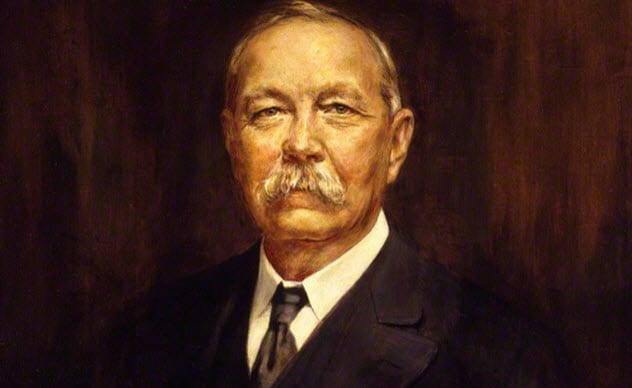
Arthur Conan Doyle remains a staple of literary history for creating the most famous detective in the world: Sherlock Holmes. Doyle was also a prolific writer of historical fiction, a practicing optometrist, and a great believer in Victorian spiritualism, meaning the belief in the supernatural.
This was a rare but not outrageous interest in the Victorian era. New inventions such as cameras, X-ray technology, and phonographs changed how people saw the world and promoted discussions about what other phenomena existed that were not previously understood. Yet for Doyle, spiritualism was more than a passing interest. It soon became an obsession and, eventually, a cause for humiliation.
Doyle’s investment in spiritualism began after his son Kingsley and brother, Innes, died of influenza after returning home from World War I. In an attempt to contact them, Doyle started attending seances. He met Harry Houdini, who magnified Doyle’s interest in the supernatural as he believed that Houdini was genuinely psychic.
In 1917, Elsie Wright and Frances Griffiths, aged 16 and 9, took a series of photographs that showed the two girls with a group of fairies dancing in the woods near their home in Cottingley, England. The pictures came to Doyle’s attention in 1920. At that time, he was writing about the existence of fairies[10] in The Coming of the Fairies, which would be published in 1922.
Doyle, along with a large portion of the public who eventually saw the photographs, believed that the photos conclusively proved that fairies were real. He faced much ridicule for defending the photographs as genuine investigations into the spiritual world. Many people concluded that Doyle’s belief in fairies was evidence that he was losing his mind, especially when Elsie confessed in 1983 that the pictures were hoaxes.
Amy is a twentysomething PhD literature student with a taste for the gothic.



